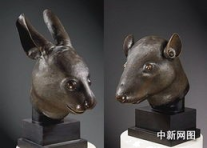Getting rid of dirt, in the opinion of most people, is a good thing. However, the attitudes to dirt are always changing.
In the early 16th century, people thought that dirt on the skin was a means to block out disease, and washing off dirt with hot water could open up the skin and let ills in. A particular danger was thought to lie in public baths. By 1538, the French king had closed the bath houses in his kingdom. The king of England did something similar in 1546. Thus began a long time when the rich and the poor in Europe lived with dirt in a friendly way. France’s Henry IV was famously dirty. Upon learning that a nobleman had taken a bath, the king ordered that, to avoid the attack of disease, the nobleman should not go out.
Though the belief above was long-lived, dirt has no longer been regarded as a nice neighbour ever since the 18th century. Scientifically speaking, cleaning away dirt is good to health. Clean water supply and hand washing are practical means of preventing disease. Yet, it seems that standards of cleanliness have moved beyond science since World War II. Advertisements repeatedly sell the idea; clothes need to be whiter than white, cloths ever softer, surfaces to shine. Has the hate for dirt, however, gone too far?
Attitudes to dirt still differ hugely nowadays. Many first-time parents nervously try to warn their children off touching dirt, which might be responsible for the spread of disease. On the contrary, Mary Ruebush, an American immunologist(免疫学家) , encourages children to play in the dirt to build up a strong immune system. And the latter position is gaining some ground.
______________________________________________________________________________________________________________________________________________________________________________________________________________________________________________________________________________________________________________________________________________________________________________________________________________________________________________________________________

法国一家拍卖公司于2009年2月25日在巴黎公开拍卖从中国掠夺的鼠首和兔首铜像,此举激起中国人民的强烈愤慨。请你根据下表提示,用英语写一篇短文。文物背景:
1. 鼠首和兔首铜像制作于清代,是圆明园诸多装饰品之一;
2. 1860年, 英法联军火烧圆明园, 抢走包括鼠首和兔首铜像等在内的大量文物;
3. 今年二月在巴黎公开拍卖;
4. 中国政府坚决反对,要求按国际法无偿归还;文物事件;
5. 法国公司一意孤行;
6. 中国人民积极行动,采取措施阻止拍卖。
7. 你的感想(请考生谈谈对此事的看法,列举两至三条)。
注意:
1. 对所给要点,逐一陈述,可适当增加细节,使其连贯, 不简单翻译。
2. 词数:150左右,开头已给出,不计入总词数。
3. 参考词汇:auction n. & vt. 拍卖 relic [C] n.文物,遗物
___________________________________________________________________________________________________________________________________________________________________________________________________________________________________________________________________________________________________________________________________________________________________________________________________________________________________________________________________________________________



